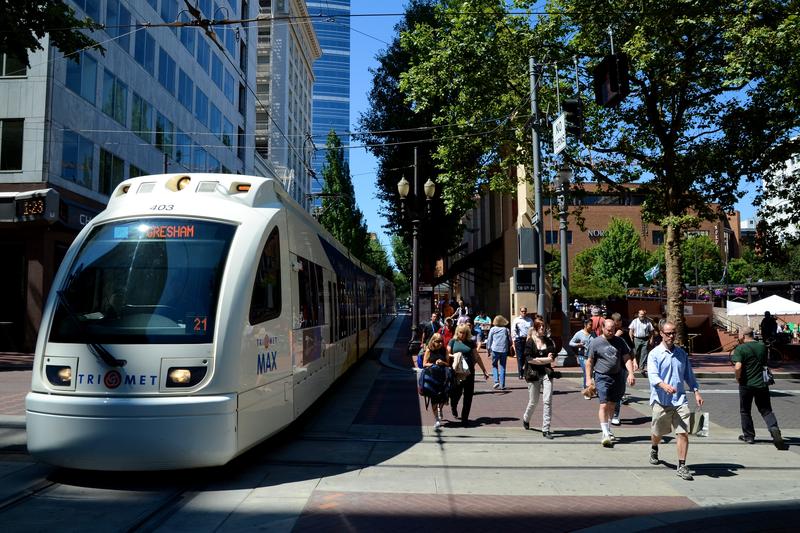 Transportation Nation
Transportation Nation
Study: Portland's 'Blue Line' Attracts Most Investment Of U.S. Transit Projects

The Blue Line — TriMet’s light rail route from Gresham to Hillsboro — attracted the biggest real estate investments of any surface transit system in the country, according to a new study. But the study also finds that rapid bus lines can garner similar returns -- and cost far less than light rail.
The Institute for Transportation and Development Policy rates the Blue Line number one for overall development investment. Institute chief executive Walter Hook credits various government efforts to attract investment along the line. But Hook says those steps can work around lines that aren’t light rail.
"From the perspective of cost-effectiveness," said Hook, "cities that invested in Bus Rapid Transit — if they also intervened intelligently to encourage transit-oriented development - found that they could leverage a lot more investment.”
The report found that a rapid bus line in Cleveland was roughly 31 times more cost-effective than the Portland-area “blue line.”
Planners here are actively debating between transit options for two corridors.
Metro’s deputy director, Elissa Gertler, says the analysis of rapid bus and light rail comes at a good time.
“I think that’s exactly the same kind of question we’re going to have to ask ourselves in Southwest Corridor and Powell-Division," said Gertler, "which is ‘where are people going, how are they getting there, and which mode will allow them to not just get where they’re going, but to actually have the places to go in their community and places to work that they want to get to.’”
Another Oregon rail system came out well in the new report: the Portland Streetcar was among the country’s most cost-effective transit systems, with a $41 return per transit dollar spent.

